火速收藏!AQA考试局常见GCSE商科词汇及释义整理
中国学生在学习GCSE Business(商科)课程时,词汇量的掌握是一大重点和难点。今天A+国际教育小编就为大家整理AQA考试局GCSE商科学习中所涉及到的一些常见的GCSE商科词汇以及其释义,来帮助同学们更高效的开展商科学习,有需要的同学们赶快收藏吧!

Aim
The intention to reach a goal.
Air pollution
The presence or introduction of harmful substances into the air causing disease,allergies or damage to humans,animals,plants or the built environment.
Asset
Something the business owns;it has a value.
Average rate of return
The average profit for the year as a percentage of the original investment.
Average rate of return=average return per annum/initial×100
Boston matrix
A tool for analysing the contribution made by each product in a business’product portfolio.It plots each product’s position according to its market share and the rate of growth of the market.
Brand image
The consumers’perception of the brand;its character,qualities and shortcomings.It is developed over time and operates as a consistent theme through advertising campaigns.
Break-even chart
A diagrammatic representation of the costs and revenue for a product;it plots total costs against total sales revenue,showing the break-even point where they cross.
Break-even output
The point at which the business’total sales equals the total costs.There is neither profit nor loss.
Buffer stock
A stock of raw materials held in reserve to protect the production process from unforeseen shortages.
Business plan
A detailed statement of how the business intends to operate,either at start-up or during a given period of time.Business plans are based on forecasts and so cover only a short time.
Cash
Money that the business has in cash or at the bank.
Cash flow forecast
A financial planning tool that estimates the money coming into and going out of the business on a month-by-month basis;it allows the business to predict times when additional finance may be needed to maintain liquidity.
Cash inflow
Money received by the business from its operations or investments.
Cash outflow
Money paid out by the business to fund its operations or investment activities.
Centralisation
Maintaining control by keeping authority at the senior levels of the organisation.
Chain of command
The line through the hierarchy that shows who is responsible for whom from top to bottom of an organisation.
Channels of distribution
The route the ownership of the product transfers from the seller to the buyer;it may be a single transaction or pass through others such as wholesalers,distributors,agents and retailers.
Closing balance
The amount that remains in the account at the end of an accounting period.
Commission
An amount of money paid to an employee that is based on a percentage of the sales he/she achieved;paid in addition to a basic salary.
Competition
The rivalry between businesses looking to sell their goods/services in the same market.
Competitive pricing
Setting the price of a product so that it is in line with competitors’prices.
Consumer law
Laws designed to ensure that businesses make products that are safe and of good quality,and that they deal with customers honestly and fairly.
Consumer spending
The money spent by households on goods and services to satisfy their needs and wants.
Contracts of employment
A legal document that sets out the terms and conditions of the job for the employer and the employee.
Cost
The money spent by a business on goods and services.
Cost-plus pricing
Setting the price of a good or service at an amount higher than the cost of producing it so that a profit is made.
Customer
Individuals,businesses or organisations that purchase goods/services and make decisions about which supplier to choose.
Customer engagement
The relationship between the business and the customer that puts the customer’s requirements at the centre of the operation to build brand loyalty.
Customer loyalty
The likelihood that past customers will continue to buy from the business,enhanced by high quality customer service and/or reward programmes.
Customer satisfaction
Whether customers are pleased with the goods/services they receive;whether they would purchase again.
Decentralisation
Where authority is spread widely through the organisation.
Delayering
The reorganisation of the organisation’s employees so that there are fewer levels of management.
Delegation
Allocating a task to someone who would not normally be responsible for it.
Demand
The quantity of a particular product that will be bought at particular price over a specific time.
Directors
The people who are elected by the shareholders to run the business on their behalf.
Diseconomies of scale
When a business grows too large,leading to a possible increase in unit cost.
Disposal of waste
The removal,storage or destruction of unwanted material.Methods include recycling,burning and landfill sites.
Dividend
A portion of the after-tax profit that is paid to shareholders according to the number of shares they own.
E-commerce
Business transactions carried out electronically on the internet.
Economies of scale
The cost advantage of producing on a large scale.As output increases the unit cost decreases.
Employees
Individuals who work full time or part time for the business;they have a contract of employment detailing their duties and rights.
Employment law
Rulings that relate to the rights and responsibilities of people who work for a business;they affect the recruitment and selection process and how the business deals with its workers.
Enterprise
The ability to identify business ideas and opportunities to bring them to fruition and to take risks where appropriate.
Entrepreneur
A person who has the vision to use initiative to make business ideas happen,managing the resources and risks.
Equality Act(2010)
Protects people from discrimination in the workplace and in wider society.It sets out the different ways in which it is unlawful to treat someone.
Ethical objectives
A business’goals that relate to fair business practice or moral guidelines and make a positive contribution to the business’reputation.
Ethics
The moral principles that guide how a business operates.
Exchange rates
The price of one currency based on another or the cost of buying one currency from another,for example£1=$1.21.
Expansion
The process of increasing a business’size.
Export
Good/service sold to a customer in another country.
Extension strategies
Methods that can be used to prolong the life of a product;could include price reductions,modifications to the product or relaunch.
External growth
The growth of a business by joining with another by merger or takeover.
External sources of finance
Obtaining funds from sources that are not part of the business;possibilities include bank loan,mortgage,overdraft,additional partner or share issue.
Factors of production
The elements that combine in the production process:land,labour,capital and enterprise.
Fixed costs
The costs that stay largely the same,regardless of the business’output.
Flat organisational structure
An organisational structure with a wide span of control and few levels of hierarchy(a short chain of command).
Flow production
Using a production line to make goods continuously and in large numbers.
Focus groups
A small number of people from the target market brought together to discuss a particular product;produces qualitative data about their preferences and opinions.
Franchising
The sale of the rights to use/sell a product by a franchisor to a franchisee.A fixed fee and/or a percentage is paid in return.The franchiser specifies the standards and provides training and support.
Fringe benefits
Additional‘perks’that are in addition to a wage/salary;they are liable to income tax.
Full time
Working all the usual hours required of an employee;usually 35 hours or more.
Gap in the market
An opportunity for a new business(or expansion)which may meet a need that is not being met,or a group of potential customers who are not yet purchasing a particular good/service.
Global warming
The steady increase in the earth’s temperature due to emissions and the build-up of greenhouse gases,resulting in climate changes.
Globalisation
The trend for large businesses to operate on a worldwide scale;money,goods and services can be transferred across national borders.
Goods
Items that are produced from raw materials for sale to businesses or consumers.
Government grants
Money available from the government to fund projects that it wants to support;the money is not repaid,but there are conditions and often progress reports are required.
Growth
A business’increase in size.Methods include:asset value,employees,market share,markets,profits and sales.
Health and Safety at Work Act(1974)
Sets out the duties and responsibilities of both employers and employees for health and safety in the workplace.
Hierarchy
The management structure of a business/organisation showing the levels of responsibility.It is often shown as an organisation chart.
Hire purchase
Buying items by making a small initial payment and paying the remaining amount in instalments over an agreed period of time.
Import
Good/service bought from a supplier in another country.
Income statement
A summary of the revenue and expenses over an accounting period that lead to a profit or loss position.
Induction
Training given to a new employee when they start a new job;it provides information about the business,its operation and working practices.
Inspection
Testing/examining items to check that materials or items conform to the specified requirements/standards.
Integration
Two or more businesses join together.
Interest rates
The rate charged for borrowing money over a period of time,or the reward for saving money.
Job analysis
The process of determining what the job entails,including responsibilities and tasks.
Job description
A summary of what the job entails,including job title,duties and who they are responsible for/to.
Job production
A method of creating a single product to meet an individual order.
Job share
A system where two employees choose to share a full time job;they receive the salary and benefits on a pro rata basis according to the proportion of the full time hours that each works.
Just in case(JIC)
Organising procurement to ensure that the production process never runs out of stock,reducing the number of sales lost due to insufficient raw materials.
Just in time(JIT)
Organising the ordering of raw materials and components to be delivered just before they will be used,reducing the need for storage.
Lean production
Continually working to reduce the resources used to create products:raw materials,labour,machines and premises.
Level of employment
The percentage of the population of working age that are employed.
Liability
The extent of the owner’s/owners’responsibility for the debts of the business.
Limited liability
The owners are not responsible for the debts of the business.The limit of their liability for the business’debts is the amount they invested.
Loans
A fixed sum of money borrowed for a specified period of time at an agreed rate of interest;repaid in instalments.
Local community
The individuals,other businesses and organisations that are located close to the business.The business interacts with these groups.
Location
The site of a business and the reasoning behind the choice of site.
Logistics
Managing the movement of supplies and products to ensure the timely delivery of supplies to the production process and finished products to customers.
Loss
Where expenditure is greater than income.
Loss leader
A good or service sold at below cost price to bring customers into the shop with the intention that,once there,they may purchase full-priced items too.
Management
Organising and coordinating business activities in order to fulfil production and meet the business’objectives.
Margin of safety
The amount by which current sales exceed the break-even level of output.
Market
Where those wishing to buy goods/services make contact with those who have them to sell.
Market research
Collecting information about the customers’needs,wants and preferences that will help the business to make design,production and marketing decisions.
Market share
The proportion of the whole market for a product that is held by the business.
Marketing
The coordination of activities that ensure that customers get what they want,in the amounts they want,when they want it and at a price that suits them.
Marketing mix
The combination of four areas of marketing activities(price,product,promotion and place)to make sure that customers’needs and wants are met while generating optimum revenue.
M-commerce
Business transactions are carried out electronically by mobile phone.
Mergers
When two or more businesses agree to join together.
Mortgage
A method of borrowing to purchase property,using the property as security.
Motivation
The reasons people are interested in and committed to their job.
National minimum wage/living wage
The lowest hourly rate that can legally be paid by an employer to an employee.
Needs
The human wants that are essential to survival;clothing,food,shelter,warmth or water.
Net cash flow
The difference between cash inflows and cash outflows.
Net cash flow=cash inflows–cash outflows
Noise pollution
A type and level of noise that is excessive and disturbing to people or animals.
Not-for-profit organisations
Associations,charities,co-operatives or voluntary organisations set up to further non-monetary ideals such as cultural,educational,religious and public service.Profits/losses are retained/absorbed.
Objective
A specific statement that defines a precise goal that can be measured and delivered within a given time.
Off-the-job training
Employees are trained away from their job,at a college,training provider or the business’training centre.
On-the-job training
Employees learn alongside experienced colleagues while they are doing the job.
Opening balance
The amount brought forward from the end of the preceding accounting period so that it is the starting figure for the new one.
Opportunity cost
The cost of making one choice concerning the use of limited resources at the expense of an alternative choice.
Organic growth
A business grows by increasing its output,by increasing its customer base or by developing new product(s).
Organisational structures
The way in which the organisation is divided into levels of management,functions and responsibilities.
Outsourcing
Contracting another business to carry out some of the business’activities,often to reduce costs.
Overdraft
Borrowing from a bank by drawing from a current account so that the balance becomes less than zero.
Owners
Individuals who own the business or own a share(s)in it,in return for the rights to decision making and profits,balanced with the risks involved.
Part time
Working only a proportion of the full time hours.
Partnerships
A business that is owned and operated by a group of between 2 or more people.
Person specification
Identifies the requirements of the job holder,including qualifications,experience and skills.
Point of sale
Opportunities to communicate information about the product in the place where it is sold(retail outlet);window displays,hanging signs or shelf signs.
Post-sales servicing
Maintenance or repair of equipment by the manufacturer or supplier during or after the warranty.
PR
Managing the relations with groups such as consumers,the media,pressure groups or investors to present a favourable impression and generate interest.
Price penetration
Fixing a low price when a new product is first introduced(into an established market)so that the product gains market share quickly.Once the product is established,the price is then raised so that profit is increased.
Price skimming
Setting a very high price when a product(often technology item)is first introduced to the market in relatively small numbers;only those who can afford to pay high prices to own the latest models will be able to purchase the product.The price is later reduced so that others can afford to buy.
Primary industry
A business that extracts the earth's natural resources.
Primary research
Collecting information first-hand direct from the public;field research including surveys,questionnaires and testing designed specifically for the market/product.
Private limited company(ltd)
A business that is owned by shareholders;the shares are not available to the general public.Shareholders have limited liability.
Procurement
The process of buying goods and services including dealing with:
demand
selection of suppliers
analysing and negotiating prices
making the purchase
managing payments.
Product differentiation
Developing the features that set a product apart from others in the market(such as benefits,style,price)and using that as part of advertising and promotion.
Product knowledge
An in-depth understanding of the features,use and application of the good/service that will enable the person selling it to provide any information that the purchaser wants before committing to buy.
Product life cycle
The stages through which a product travels during its journey from being an idea to being old and dated:research and development,introduction,growth,maturity,decline.
Product portfolio
The range of products offered by one producer.
Productivity
The amount produced by a worker/machine/factory in a given time;the ability to produce more output with fewer resources.
Profit
The difference between the money received from the sale of a good/service and the amount it cost;the amount that remains after all the costs have been paid.
Profit=total revenue–total cost
Profit maximisation
A business’ability to make maximum profit with low operating expenses.
Profit sharing
A scheme that pays employees an additional amount based on the year’s profits.
Promotion
Communicating information about the product to:
make consumers aware of a product
remind customers about a product
persuade customers to buy.
Proximity to market
Businesses that serve their customers directly must be located close to those customers.
Public limited company(plc)
A business that is owned by shareholders.Anyone can buy shares in the business.Shareholders have limited liability.
Purchasing
The business buys the goods and services that it needs for producing the goods it sells or for delivering the services it sells.
Qualitative market research
Collecting information about potential customers’opinions and preferences about the attributes/characteristics/properties of a product;open questions allow respondents to express their own views by not limiting their responses.
Quantitative market research
Using sampling techniques such as surveys where the findings are expressed numerically;closed questions allow a limited choice of responses and are easy to turn into statistics for analysis.
Raising finance
Getting the money to pay for starting the business or for developing it.
Raw materials
Businesses that use raw materials that are heavy and/or bulky choose to locate close to their suppliers to reduce the cost of transport or storage.
Recruitment
The process of hiring a new employee.
Recycling
The conversion of waste into reusable material.
Retailer
A business or person that sells goods to the consumer.
Retained profit
An internal source of finance;a portion of the year’s profit is kept back to fund projects.
Revenue
The income generated from the sale of goods/services.
Risk
The possibility that the return on investment will be lower than expected.
Salary
A method of paying employees for their work;based on a fixed annual amount,normally paid monthly.
Scarce resources
When the raw materials that are available are not sufficient to meet needs.
Secondary industry
A business that uses raw materials to manufacture goods or construct items.
Secondary research
Examining information from published sources;desk research using information that has been collected for other purposes.
Segmentation
Breaking the whole market for a product into different groups or types of consumers with similar needs/wants/characteristics;enables the marketing mix to be designed to meet their needs more precisely.
Selection
The process of choosing which applicant to employ.
Service
An action that is carried out to fulfil a need or demand in return for payment.
Share(s)
The units of the business that are available for sale to investors.
Share issue
New shares in a business made available for the public to buy.
Shareholder(s)
Those people who own shares in a limited company;each shareholder is a part owner of the business.
Shareholder value
The value that a shareholder is able to get for the money invested in the business:capital gains,dividend payments,pay-outs to shareholders or proceeds from buyback programmes.
Social objectives
A business’goals that relate to fair treatment of the people concerned:customers,investors,suppliers or workers.
Sole traders
A business that is owned and operated by one person.
Sources of finance
Ways of obtaining the funds the business needs;money may be needed to meet short or long term needs.
Span of control
The number of people for whom a manager is directly responsible.
Staff retention
Keeping staff once they have been employed.
Stakeholders
Those with an interest in the way that a business operates.
Statement of financial position
Reports the assets,liability and equity of a business on a specific date;formerly known as the balance sheet.
Styles of management
The methods used by those in leadership roles to achieve the most effective outcomes from the employees for whom they are responsible.
Supplier
A business that provides goods/services.
Supply chain
The network of organisations,people,activities,information and resources that take the product/service from supplier to customer.
Survival
The capacity of a business to stay in business.It is dependent on the business selling sufficient amounts of its goods/services to cover all its costs.
Sustainability
The process of operating without damaging the environment or depleting natural resources.
Takeover
One business takes control of another.
Tall organisational structure
An organisational structure with a narrow span of control and many levels of hierarchy(a long chain of command).
Target market
The particular group of customers to which a business aims to sell its product;a particular market segment.
Technical economies of scale
The benefits that large businesses gain from having the funds to invest in expensive machinery that brings cost savings.
Telesales
Attempting to sell a good/service by making the initial contact by telephone.
Tertiary industry
A business that provides services to consumers or other businesses.
Total costs
All the costs involved in producing goods/services.
Total costs=fixed costs+variable costs
Total quality management(TQM)
A philosophy that involves everyone in the business in the quest for continual improvement in the attitudes,practices,structures and systems that combine to create a top-quality product.
Trade credit
The process of buying items from a supplier and paying for them later;for example,30 days after invoice date.
Trade descriptions
Protecting customers from false or misleading descriptions about products or their prices.
Traffic congestion
The effects of overuse of transport networks,for example slower speeds,traffic queues and longer journey times.
Training
Employees learn the skills and techniques needed to do the job or to prepare for a new role.
Unique selling point(USP)
The key benefit of a good/service;it differentiates the product from others and will be the focus of advertising and promotion.
Unit cost
The average cost of each unit.
Unit cost=total cost÷quantity
Unlimited liability
When the owner(s)are responsible for all the debts of the business.Their personal funds would be used to settle the business’debts if the business’funds were insufficient.
Variable costs
The costs that change as the business'output changes.
Wage
A method of paying employees for their work based on an hourly,weekly or piece of work basis,usually paid weekly or monthly.
Wants
Things that people would like to have;not limited to the things they need to survive.
Waste
The unwanted material left over from the production process;it may have little or no value and the business may have to pay for its disposal.
Wholesaler
A business or person that buys goods in large quantities from producers,stores them in warehouses and sells them on to retailers.
Word of mouth
Personal recommendations from satisfied customers to prospective customers.
Zero-hour contract
A contract of employment where the employer is not obliged to provide any minimum hours of work;the employee is not obliged to accept any work that is offered.
以上就是A+小编关于AQA考试局GCSE商科词汇的整理,同学们对于这些常见商科专业词汇是不是都能够熟练掌握和运用了呢?如果在GCSE课程学习上还有什么疑问,欢迎随时咨询我们的线上老师,让老师一对一为你进行专业的课程辅导吧!
 喜欢 [0]
喜欢 [0] 猜你喜欢 More

2022-05-07
A-level/GCSE入学能力测试
2021-09-03
刚搞懂A-Level课程,居然又被考试局绕蒙了?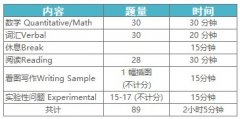
2021-11-02
SSAT考试时间及SSAT评分标准
2021-11-29
美国留学热门专业 回报价值最高的T0P50专业

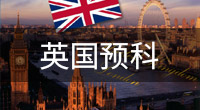



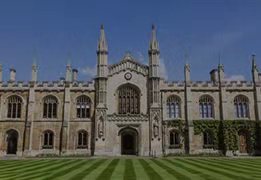




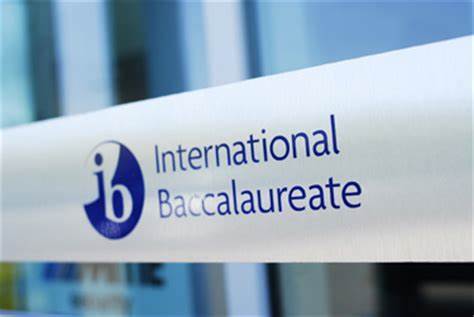



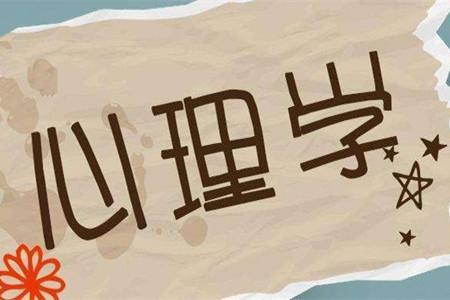

 官方微信
官方微信

 官方微博
官方微博
